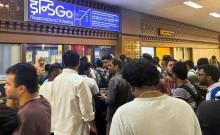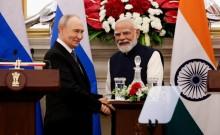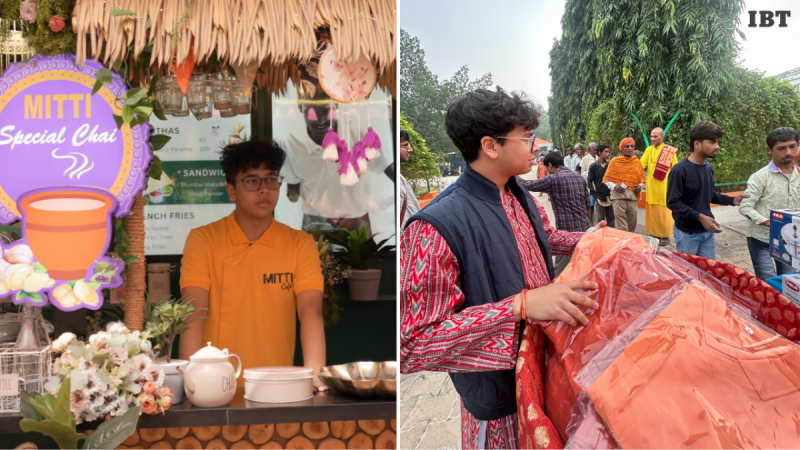
At just 16, Vivaan Bajoria is doing what many established designers only aspire to—creating fashion that restores dignity, independence, and comfort for those often overlooked by the mainstream. Through his initiative, Aekya, he designs adaptive clothing for the differently abled and senior citizens.
Vivaan's collaboration with Mitti Café, an award-winning social enterprise run by people with disabilities, has drawn national attention for redefining how uniforms can look and feel—functional, inclusive, yet stylish. From magnetic buttons and Velcro openings to micro-sized fits and sweat-absorbing fabrics, there's thought behind every stitch.
In an exclusive conversation with Rini Chatterjee for International Business Times, Vivaan opens up about the inspiration behind Aekya, the emotional moments that shaped his vision, and how he's quietly building a movement that puts inclusivity at the heart of design.
Excerpts from the interview
IBT: You're only 16 and already designing with such a strong sense of purpose. What first inspired you to create clothing for differently abled people and senior citizens?
Vivaan: It wasn't just one moment; it was a bunch of experiences that came together over time. It started during our Christmas drives with my parents, when I met a deaf and mute girl who was shivering in the cold. My mom tried to talk to her, but she couldn't understand. I remember telling my mom, "She can't hear or speak," and the moment the girl realized we knew that, everything just went quiet; it felt like we understood each other without words.
Then, during my first visit to Munger, I met many differently abled people from marginalized communities. Some had never even seen a garden before. I still remember one man trying to bargain with a rickshaw driver for just Rs 2 to get home; that image has never left me.
But the biggest turning point was watching my grandfather, this tall, strong man I'd always looked up to, suddenly confined to bed, unable to do even simple things on his own. It made me realize how much we take independence and dignity for granted.
All of these experiences, along with my love for technology and finding ways to solve problems, made me want to do something that could help people who often get left out of design conversations.
Aekya is my small step in that direction. Our next initiative brings together young volunteers to record and share the life stories of our grandpas and grandmas' generation and, of course, those who are specially abled and at that age, so their voices and journeys can be heard, remembered, and valued.
IBT: Can you tell me about the design process? What specific challenges did you consider while making clothes that are both functional and comfortable for them?
Vivaan: Everything had to be rethought—the fabric, the material, even the way clothes are styled. Different disabilities need completely different solutions.
Take something as simple as sizing; for most people, it's usually XXS to XXL, right? But here, it doesn't work that way. Every person is different, their age, body type, and even how their body has adapted to their needs. There's no one-size-fits-all. Each piece has to be made keeping that person in mind.
And then there are people who need help getting dressed. In those cases, the clothes aren't just for the person wearing them; they're also for the person helping them. That changes everything about how you think of design, the openings, the fastenings, and the stretch of the fabric. Every choice has to make it easier, safer, and more comfortable for both.
IBT: How did the collaboration with Mitti Café come about? Did you visit the café or interact with the team before finalizing the designs?
Vivaan: It started when I met Alina at an event where she was being awarded. She spoke about her journey and the story of Mitti Café, and anyone who's heard her speak will tell you how deeply it moves you. I already had an idea in mind, but no real direction on how to take it forward.
Alina helped me see things differently; she opened my eyes to the real challenges and guided me through the concerns I hadn't thought of. She even asked me to prototype, refine, and work on my communication. Selling or pitching isn't really my strength; I'm more of a behind-the-scenes person, so her mentorship meant a lot.
Another huge source of inspiration for me has been my godmother, who once shared a short reel with me on what adaptive fashion looks like globally. That became a big reference point for how I approached Aekya's first designs.
The initial designs for Mitti Café were created after understanding the team's needs, but one round was never enough. It took multiple iterations, and honestly, I'm still working on improving them.
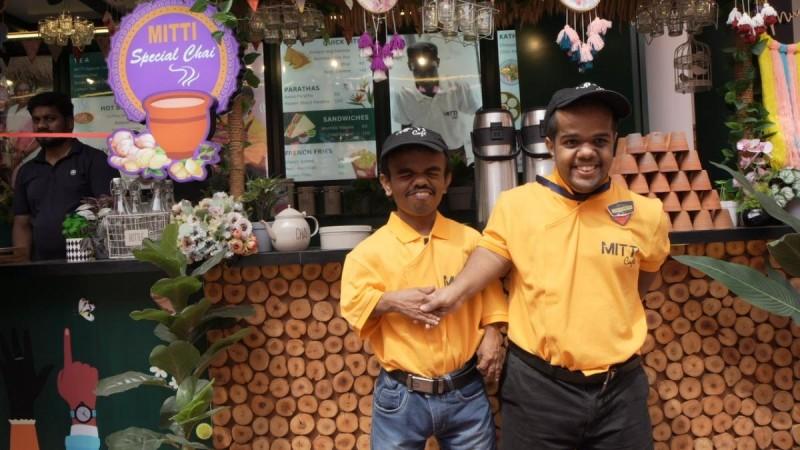
IBT: What are some of the key features in the uniforms that make daily work easier or more dignified for the staff at Mitti Café?
Vivaan: For Mitti Café, the idea was to make the uniforms look cohesive; everyone had to look alike from the front in terms of color, fabric, and fit, but the functionality needed to adapt to each person's ability.
We used high-grade cotton for better sweat absorption, especially important for wheelchair users who experience excessive sweating. We added magnetic buttons for those with limited hand movement, Velcro openings for ease, microfibers stitched in for quick cleaning of glasses, and micro-sizing for individuals who are of smaller stature or have dwarfism.
We're also experimenting with side-openable pants and detachable collars to make dressing even easier. The goal has always been to combine comfort, dignity, and uniformity, without ever compromising on style.
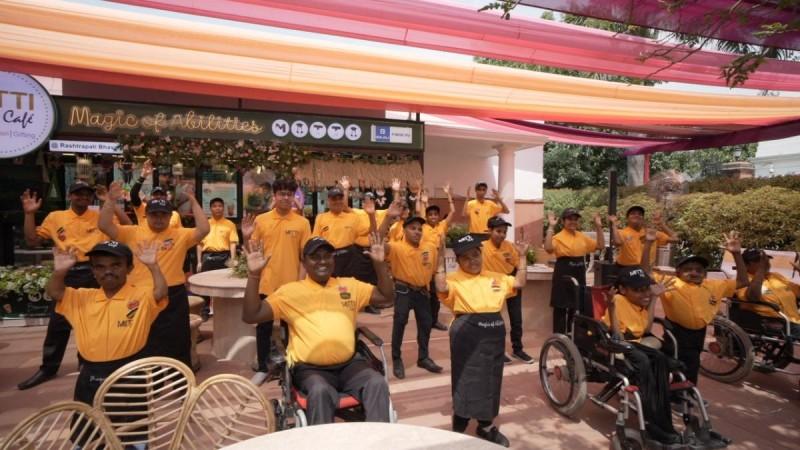
IBT: Have you received any feedback from the employees who wear your designs? What have they told you about how it's changed their work experience?
Vivaan: Yes, and not just once, but every single time. Their feedback has been at the heart of our design process. It's never been one-and-done; it's always iterative. Every time we work with a new group of beneficiaries, we re-engineer our designs based on what they tell us.
Those with limited hand movement, visual disabilities, or mild autism have all shared small but important inputs: stronger magnetic closures, simpler and easier-to-wear garments, and, for some, compression vests for better comfort and posture. Listening to them directly has shaped how Aekya evolves.
IBT: Designing for inclusivity at such a young age is remarkable. How do you balance creativity with empathy in your work?
Vivaan: That's honestly one of the biggest challenges and the most exciting part. I spent my summer studying product design, and it really opened my eyes to how interdisciplinary the process is. I enjoyed learning design tools, prototyping, testing, and re-engineering; it fits well with how my brain works—very algorithmic and structured.
Something as simple as adding a microfiber strip to clean glasses might seem minor, but it came from this mindset shift that good design is thoughtful design. It's the same thinking behind the solar nanothela I'm prototyping for persons with disabilities in Bihar and Kashmir, an innovation that makes daily livelihood sustainable.
IBT: Do you think inclusive design should become a bigger part of how mainstream fashion and hospitality think about uniforms and functionality?
Vivaan: Definitely. I think, as Indians, we're culturally wired to "adjust." So when people with disabilities or the elderly are given clothes made for fully abled bodies, they just adapt to what's available. That mindset is changing now, and it should.
We're designing clothes for them, for people who need recovery wear, who can't stand while dressing, or who have limited mobility, and doing it in a way that's cool and stylish, not clinical or boring. Dignity doesn't have to come at the cost of design.
IBT: Looking ahead, what's your vision for the next five years? Do you plan to expand this initiative, study design further, or perhaps start your own inclusive fashion label?
Vivaan: There's a lot happening! We've just signed an MoU with the Indian Army in Kupwara, where they're doing incredible work supporting women and local youth. I recently helped organize a fundraiser to donate an embroidery machine to a woman entrepreneur there; she's now setting up her first store for shawls and also makes uniforms and Indian flags.
In the same region, we're planning to pilot the solar nanothela project to create new livelihood opportunities for persons with disabilities. A similar initiative is being developed in Bihar within the communities we already work with, because I believe in solving deeply, not just scratching the surface.
And one project that's really close to my heart is something we'll be launching soon, The Grandpas and Grandmas Book of Life. It invites young volunteers to spend an afternoon with seniors, record their stories, and help create a book of their memories. Because at that age, all they really want is not to be forgotten.







